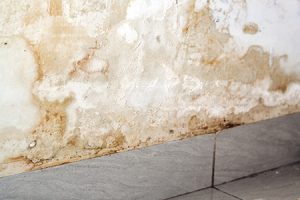The content listed below relating to How to Prevent Bathroom Water Damage is highly entertaining. Don't miss it.

The shower room is very prone for damp build-up as well as possible water damage due to the constant use water in it. This post uses straightforward assessment methods to help spotting water damage threats.
The regular use of water in the washroom makes it very susceptible for moist accumulation and potential water damages. By evaluating it consistently, you can minimize water related problems.
The adhering to collection of examinations is very easy to do as well as should be done once in every 3 months in order to maintain your shower room in good shape and also to stop potential water problems brought on by the tub, the shower, pipe joints and also plumbing, sinks, closets, and the toilet
Do not forget doing these assessments and be thorough while executing them. Bear in mind that these easy examinations can save you a lot of cash by supplying early signs for water damages
Bathtub and also Shower
The shower as well as bathtub call for unique attention and also maintenance. Check the floor tiles and change if split. Make sure that there is no missing out on grout in between the ceramic tiles. Inspect and also replace fractured caulking at joints where the walls fulfill the flooring or the bathtub. Obstructed drains and also pipes troubles will prevent the tub from drying as well as may suggest serious issues beneath the bath tub. Speak with a specialist right away to stop structural damage. Focus on stainings or soft areas around the bath tub walls as they may show an interior leak.
Plumbing
Signs for water damages are hard to find because the majority of pipes are mounted inside the walls.
Pay unique interest to floor covering as well as walls wetness and spots as they may suggest an invisible plumbing issue. Check wetness degrees in adjoining areas as well.
Sinks and also Cabinets
Sinks and cupboards are exposed to wetness and also humidity day-to-day and are commonly neglected. Check regularly under the sink as well as on the kitchen counter over it. Repair any type of drip in the catch as it might suggest drain troubles. Look around the sink, sluggish draining pipelines might indicate a blocked drain. Change sink seals if they are split or loosened.
The Toilet
The bathroom is an at risk water junction. Inspect the water lines and also search for leaks around the bathroom seat, in the tube, and under the water storage tank. If you find any kind of indicators of moisture on the floor around the toilet, check for leaks in the toilet edge as well as container seals.
Realize that hanging toilet bowl deodorants enhances the chances for clogs.
Water Damage Signs In The Bathroom To Avoid Cleanup
Musty smell
This is one of the easiest signs to catch because musty smells are so odorous. The damp, earthy, moldy smell should be a big red flag. The smell will develop when moisture gets trapped in surfaces, and begins to facilitate mold growth. Leaking pipes under cabinets, inside walls, and behind shower fixtures will cause moisture to stay trapped and not dry, which will lead to mold growth and spread. As soon as you notice any musty smells in your bathroom, have it checked for hidden water damage and cleanup signs.
Visible mold
If the smell isn’t there to give it away, sometimes you will actually see mold growth. Finding mold in your bathroom is a serious problem, because mold is very harmful to your health. By the time mold growth is visible, it also means that water damage has already occurred and been present for some time. The only way the mold problem can be resolved is to find the source of the moisture and get it stopped. To safely and adequately remove mold, you need to have professionals handle the remediation. Do not waste any time in getting mold problems addressed, fixed, and sanitized so that you can protect you and your family from the many respiratory symptoms caused by mold exposure.
Damaged floors
Bathroom floors should be able to withstand some exposure to water while still remaining in good condition. However, when excess exposure or water leaks occur, they will begin to damage even the most water-resistant flooring. If you notice any cracking, bubbling, staining, or warping on your bathroom floors, there is probably a water leak somewhere causing the distortion. If you notice areas of the floor have become softer, or even have a spongy feeling, there is probably damage to the subfloor. Subflooring is typically made up of plywood. When plywood is exposed to water or moisture, it will absorb it. Once it has become saturated, the weight of the excess water will cause the wood to swell and soften. Check the floors in your bathroom frequently to catch any of these sings before they lead to damaged subflooring.
Changes on walls
When water leaks behind walls, it will cause changes in the drywall. Peeling plaster, blistering paint, and soggy wallpaper are all good indicators that excess water is building up behind the wall. Water leaking behind drywall will cause it to swell and be soft to the tough. If you start to notice gaps along the trim of your walls, or where tile meets the wall, it could also be a strong indicator that there is a leak behind the wall. Any changes, distortion, or damage on the walls should be evaluated as soon as you notice it to prevent further water damage and cleanup.

I found that blog post on Preventing Water Damage in the Bathroom while exploring the web. Kindly take the time to distribute this content if you appreciated it. I am grateful for your time. Visit us again soon.
Schedule A Free Estimate